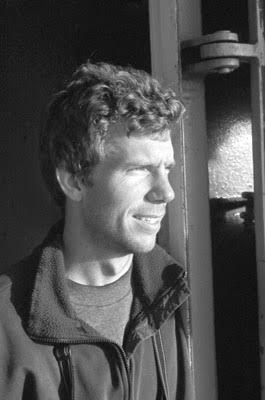Current Projects
Some of the current research involving Dr. Stokes and the IMT Laboratory includes laboratory work investigating the use of bioluminescent plankton for use as microscopic flow sensors. Turbulent mixing under breaking waves. High-speed imaging of ocean surface processes and the formation of sea spray aerosols with the UCSD CAICE program. Development of new instrumentation for the study of the sea surface microlayer and atmospheric ice particles. Internal wave mixing of nutrients and bulk water movements across ecosystems in Florida, New Zealand, and Antarctica (with Jim Leichter at SIO) that utilize technology developed in the IMT Lab. High resolution mapping of the sea floor and tomographic imaging of the pelagic water column. Other field work has included working as part of an international team of scientists studying the nearshore physical and acoustic environment influencing the migration of Humpback whales off the coast of Australia.
Other areas of study:
- air-sea gas exchange and bubble formation
- high pressure gas and environmental sensor systems
- polar biology
- mesoscale physical forcing on benthic communities
Collaboration
A few of the major collaborating research institutions he has worked with include the NASA Ames Research Facility, the British Antarctic Survey, Cambridge University, Woods Hole Oceanographic Institution, University of Rhode Island, Stanford University, Monterey Bay Aquarium Research Institute, University of Otago (New Zealand) and University of Queensland (Australia). He feels that close collaborations with other researchers are of great benefit because they increase the opportunities and resources available to study difficult or isolated environments. And, he enjoys the close camaraderie that develops among researchers with different specialties that have come together to combine their expertise to study a particular problem.
Inspiration and Vision
“The atmosphere at MPL and in the IMT Laboratory is dynamic and exciting. In our group we bring a great range of expertise and experience to focus on projects that are both intellectually stimulating as well as fun. Grant, James and Cary are not only great researchers but we are also all great friends, so working together is a pleasure, not a chore. The IMT Laboratory is unique in its ability to combine novel oceanographic instrument design and fabrication with immediate application to scientific study. This provides an ideal working environment for someone like myself who has a broad range of interests. Life as a scientist is often grueling and boring in the details, but, punctuated with brief periods of excitement. Working extensively in the field provides a high level of satisfaction and having a hands-on-approach to experimentation yields a different perspective to many scientific problems.”

